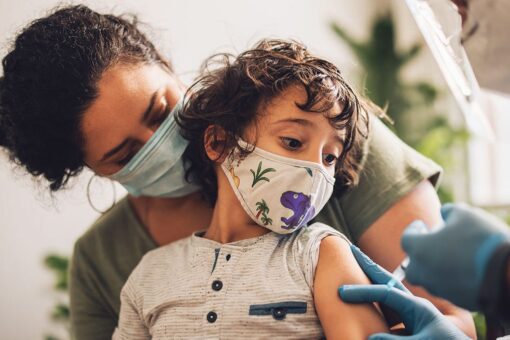NEWYou can now listen to Fox News articles!
Knowing your “ABCs” may save your life.
“The Real Housewives of Orange County” star Tamra Judge recently took to Instagram to remind her followers about the dangers of melanoma.
“May is melanoma awareness month. Please Go get a full body skin check, it could save your life. #melanomasurvivor,” she posted several days ago.
The 54-year-old was diagnosed with the skin cancer in 2017 after first noticing a mole that summer on a very sensitive area — the buttock, but it was later diagnosed as melanoma after a massage therapist encouraged her to make sure it was not serious, according to Self, a wellness and health content platform.
BRAIN CANCER DEATHS OF SIX FORMER PHILLIES PLAYERS MUST BE INVESTIGATED, SAYS DR. SIEGEL
“I probably would have never, ever even knew it was there because I am not turning around and looking back there,” the California native said. “It didn’t hurt. There was nothing, it wasn’t raised. There was no reason for me to think there was something wrong.”
A few months later a dermatologist biopsied the lesion and it came back melanoma. She subsequently had surgery and now is skin-cancer free.
Apply sunscreen to prevent skin cancers
(iStock)
Skin cancer is the most common form of cancer in the United States, but melanoma accounts for approximately only 1% of all skin cancers, according to the American Cancer Society.
“Melanoma, the most serious form of skin cancer, is characterized by the uncontrolled growth of pigment-producing cells. Melanoma may appear on the skin suddenly without warning but also can develop within an existing mole,” according to the American Academy of Dermatology Association (AAD).
“The overall incidence of melanoma continues to rise. In fact, melanoma rates in the United States doubled from 1988 to 2019, and worldwide, the number of melanoma diagnoses are expected to increase by more than 50% by 2040.”
Wearing sunscreen can help prevent skin cancer.
(iStock)
It’s thought that excess exposure to ultraviolet (UV) radiation either from the sun or from indoor tanning increases the risk for all skin cancer types, including melanoma, per the dermatology association.
And more than 90% of melanoma cases are from skin damage from ultraviolent radiation, per the Centers for Disease Control and Prevention.
“Using tanning beds before age 20 can increase your chances of developing melanoma by 47%, and the risk increases with each use,” AAD warns.
BREAST CANCER SURVIVOR’S INCLUSIVE LINGERIE BRAND CATERS TO DIAGNOSED WOMEN
“The American Academy of Dermatology urges everyone to examine their skin regularly. This means looking over your entire body, including your back, your scalp, your palms, your soles, and between your toes.”
And if you notice a mole on your skin, follow the “ABCDE rule” to know when to seek medical attention.
The “A” stands for asymmetry where half of the spot is different from the other, “B” stands for an irregular border, the “C” stands for color, where the mole changes colors from one area to the next, the “D” stands for diameter, where the mole is bigger than the size of a pencil eraser and “E” stands for evolving, where the spot looks different from the rest.
Putting sunscreen on a child
(iStock)
“If you notice a new mole, a mole different from others on your skin, or one that changes, itches or bleeds, even if it is smaller than 6mm, you should make an appointment to see a board-certified dermatologist as soon as possible,” AAD advised.
Melanomas are highly treatable if caught early, with a 99% average five-year survival rate for those who were diagnosed before it spread to lymph nodes.
Prevention against harmful UV rays is essential, so the dermatology association advises: “The sun’s rays are strongest between 10 a.m. and 2 p.m. If your shadow appears to be shorter than you are, seek shade.”
Also wear clothing that protects against the sun, like long sleeved shirts, pants, wide-brimmed hats and sunglasses with UV protection, according to AAD.
But for more effective sun protection, look for special clothing with an ultraviolet protection factor (UPF) number on the label.
CLICK HERE FOR THE FOX NEWS APP
And apply broad-spectrum sunscreen that is also water resistant with SFP of 30 or higher to all skin not covered by clothing, remembering to take extra precautions near water, snow and sand because their reflective properties can ” … intensify the damaging rays of the sun, which can increase your chances of sunburn.”
“Avoid tanning beds. If you want to look tan, consider using a self-tanning product, but continue to use sunscreen with it.”




